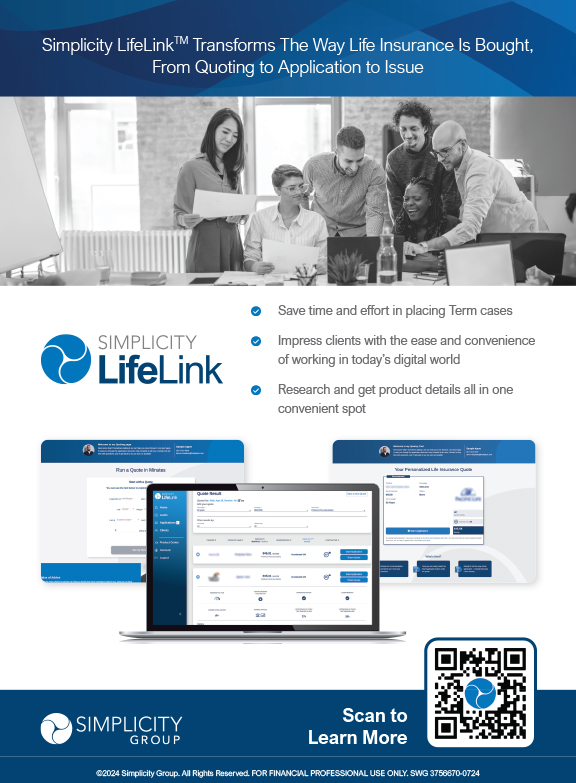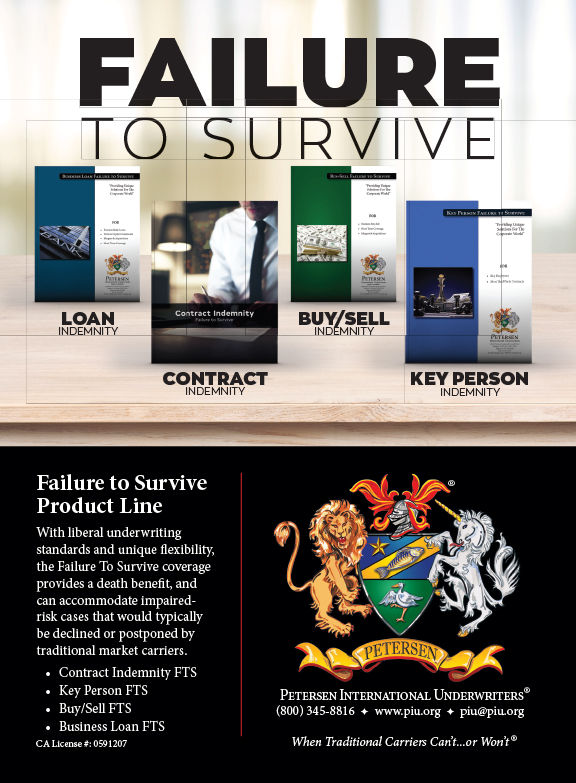The life insurance industry is usually lagging and playing catch-up with technology. There are many reasons for the lag such as costs, compliance and adoption. The Life Brokerage Technology Committee (LBTC) has made it a priority to research and educate BGAs on emerging technologies. In the last two years, there have been some growing tech trends like accelerated underwriting, ePolicy Delivery, mobile apps for life insurance sales and marketing just to name a few. Today we will introduce you to two significant new technologies that are game changers!
You will first learn about Chatbots, which offer agents the ability to quote, field underwrite, get marketing information, and apply for insurance using plain conversation on a messaging app or voice assistant. We will then update you on Blockchain. In the last few years, you probably have come across a news story about Blockchain as it relates to Bitcoin, however Blockchain will affect the life insurance industry resulting in a monumental shift in the way sales, licensing, new business, underwriting, agent commissions and claims are processed. Blockchain is an industry disrupter; however, it will positively impact BGAs and agents.
What Is A Chatbot?
A chatbot is an automated, artificial intelligence system/program that responds to speech or text input. It can be used to help you find answers, help you with tasks or organization, and it can even be used for entertainment. A simple example of this interaction is when you ask your phone’s AI about the weather. Rather than looking for the information online or through an app yourself, it will find the details and provide them to you immediately through speech and text. Chatbots are used on messaging apps and voice assistants. Text messaging, Facebook messenger, and Skype are some of the more popular messaging apps. Google Assistant and Microsoft Cortana are examples of voice assistants. Other popular ways people use chatbots are for news, creating a grocery list, personal finances, scheduling, and even friendship. Chatbots are used widely for customer support or by businesses on their websites to interact with their customers; this website might shed some light on how such a bot is made – https://botpress.io/learn/how-to. Amazon Echo (Alexa) for example, is a voice assistant with a chatbot that does tasks you request and answers questions. The artificial intelligence in the chatbot learns how you ask for information and gets smarter the more you use it. Chatbots have personalities, designed so that the conversation experience drives more engagement. The learning curve is easy because there are over 1 billion users of Facebook messenger alone for example covering all age groups. Millennials are only interested in using chat to communicate and for getting their information. This means that more than likely agents are already engaging in chat with a messenger app for personal and business purposes.
How Will Agents Use A Chatbot To Sell Life Insurance?
When an agent runs a term insurance quote for example, they may use a mobile app or run it from a BGA’s website. If the agent needed to look up underwriting guidelines like height and weight, blood pressure, cholesterol, and tobacco use, or a malady like diabetes, then the agent would look for the information in the carrier’s underwriting guidelines in a PDF or use a field underwriting software program. The same thing applies for looking up information on a life product such as issue ages or conversion options. A chatbot is an agent’s one stop resource to have all the information he/she needs right at their fingertips.
Scenario: Agent opens-up a chatbot using a voice assistant on his/her smartphone. The agent says, “I need a quote for a 45 year old male nonsmoker for $500,000 preferred.” Instantly the annual and monthly premiums for 10, 15 and 20 year term pops up on the screen. The client tells the agent he has high blood pressure. The agent then says to the chatbot, “blood pressure is 120/90.” The voice assistant shows on the screen and verbally says, “For blood pressure 120/90 the risk class is standard plus.” The agent then says to the chatbot, “Change the risk class to standard plus.” A revised quote appears instantly on the screen. The agent can then apply for the insurance submitting the business through a term ticket like ApplicInt’s ExpressComplete right from the same chatbot.
Impact Technologies Group, Inc., has a series of chatbots for insurance called InsureBotsTM . They are used for life insurance quoting, field underwriting, annuities, long term care, marketing and agent recruiting. There are reinsurers creating underwriting chatbots. Carriers are starting to develop internally their own chatbots for marketing. The P&C insurance world is exploding with chatbots using them as a claims advisor for example. Agents who sell insurance utilizing their website will see affordable solutions for a Web-bot that will quickly and easily educate the client answering common questions, providing media like YouTube videos, and then moving the client to a quote and a pathway to apply for insurance. The consumer experience will be much smoother and engaging using a chatbot, helping the agent generate more business.
What Is Blockchain?
Blockchain is an algorithm and distributed data structure for managing electronic cash without a central administrator among users. Originally designed for the crypto-currency Bitcoin, the blockchain architecture was driven by a radical idea of a currency exchange system without any middleman, bank, country, or any other macro-environmental factors. This process of exchanging online money has become more and more popular recently with people looking towards trading apps like this – https://bitcoinrevolution.cloud/nl/. There are now a number of uses for Bitcoins, including purchasing some products from Amazon or topping up Microsoft accounts. However, some people prefer to keep their online money in a cryptocurrency wallet to invest it later. People planning on saving their online money want might to consider reading some digital asset custody solutions to keep their cryptocurrency secure.
In order to better understand blockchain technology, it makes sense to first consider the “Internet.” It enabled a free, fast, and global exchange of information and ideas. The blockchain adds another dimension by making it possible to transfer and exchange value (and assets) without the involvement of intermediaries. Blockchain technology can also be used to store personal and other information in an accessible, but secure, environment.
How Does Blockchain Work?
Blockchain, also known as a Distributed Ledger Technology (DLT), was invented to support the Bitcoin cryptocurrency (Internet money). Bitcoin was motivated by an extreme rejection of government-guaranteed money and bank-controlled payments. The developer of Bitcoin, Satoshi Nakamoto, envisioned people spending money without friction, intermediaries, regulation or the need to know or trust other parties. The success of Bitcoin led to the emergence of many other cryptocurrencies such as Ethereum – those looking to manage their digital assets can Buy Ethereum Zipmex using their specially designed exchange platform.
How Can Blockchain Impact The Life Insurance Industry?
Imagine a world in the insurance industry where life insurance agents don’t have segregated sales and marketing, product, underwriting, new business submissions, policy servicing, claims management, and commissions systems and departments to deal with on a consistent basis. They can access, track, and transact every facet of a life of a policy (case) from inception to service within block(s) of a chain securely.
The basic principle that blockchain provides is decentralized storage of the data. Currently, at an insurer, this data is stored on a centralized network. In many cases, there are multiple databases/departments that are managing these transactions between the agent/brokers, BGAs, and the carriers. At times, the information is either disjointed or incomplete regarding customers and their transactions. Blockchain solves this problem for the life insurance industry by aggregating all the transactional, static and changed information, as well as all the data. It is processed and stored decentralized, un-editable, unidentifiable and securely.
One of the more disruptive applications of blockchain is the development of “Smart Contracts” models. Smart contracts contain self-executing protocols that work with a blockchain to enforce the performance of a contract across all counterparties. This can help with automating the verification of coverage and streamline claim settlements to improve operational efficiency and hence minimize cost.
Here are some other great benefits of blockchain that will impact agents directly:
- Fraud Reduction: With blockchain technology, tampered documents or false billings are almost impossible to process since the data is immutable and decentralized. This will also reduce the amount of erroneous claim payments.
- Policy Purchase and Underwriting Process: Policy issue process can be designed via a blockchain to create a combination of data providers, health exchanges, and insurers. Underwriting process can be expedited by obtaining the required information from health exchanges and data providers to expedite the underwriting and new business process with minimal customer effort.
- Management of Agent Contracts: Blockchain can be used to instantly verify agent licensing, contracts and setup a notification system to alert agents and issue commission checks when the policy is signed.
The impending future of the life insurance industry could strengthen through an intelligent adoption of blockchain. Large insurers have the predicted possibility to greatly benefit from the many applications in digital currencies, fraud solutions and smart contracts. But the process of implementing blockchain will come with necessary tweaks to the underwriting processes and structures of policies, as well as risk underwriting. Essentially, Blockchain reduces premiums collected by large insurance companies by allowing for cheaper and more consumer oriented products to be developed. Ideally, cooperation between blockchain startups, carriers, brokers, reinsurers and other segments of the insurance industry would lead to optimal efficiency, but those segments will be subject to disruption and may not follow suit. LIMRA’s recent announcement that is has established an advisory council to explore opportunities in the life insurance and retirement sectors to use blockchain distributed ledger technology is a good sign. It is indicative of our industry seeking the practical and collaborative solutions to use the blockchain technology in the right manner.
References for Blockchain:
- Financial Times article; Technology: Banks seek the key to blockchain: https://www.ft.com/content/eb1f8256-7b4b-11e5-a1fe-567b37f80b64 – retrieved on August 24th, 2017.
- Cognizant; White Paper; Blockchain: A Potential Game-Changer for Life Insurance: https://www.cognizant.com/whitepapers/blockchain-a-potential-game-changer-for-life-insurance-codex2484.pdf – retrieved on August 26th, 2017.
- Team Brella; White Paper: https://teambrella.com/WhitePaper.pdf – retrieved on Aug 20th, 2017.
- Online article: https://medium.com/startup-grind/3-reasons-why-the-blockchain-revolution-is-finally-becoming-a-reality-63bdd90c89e2 – retrieved on August 27th, 2017.


























